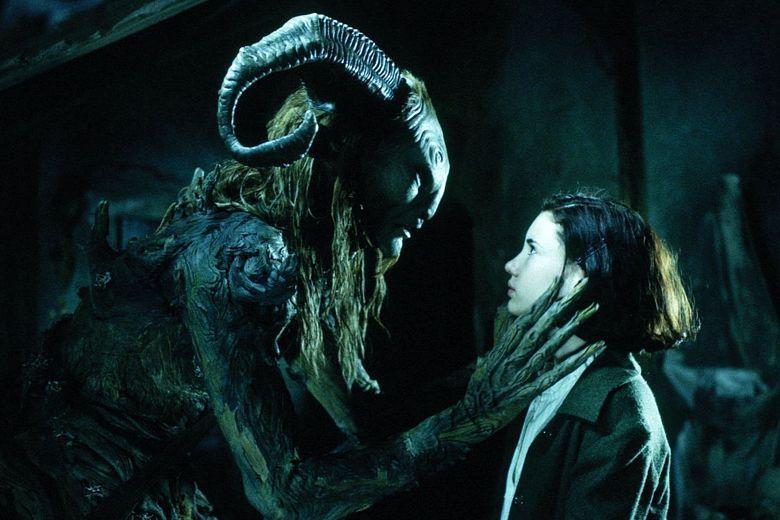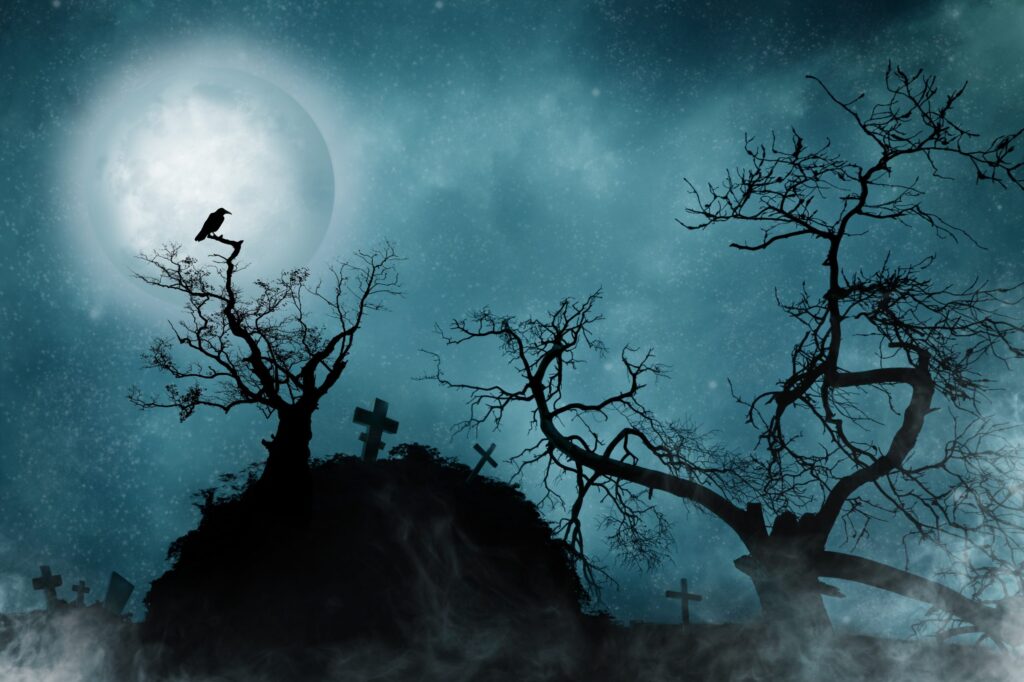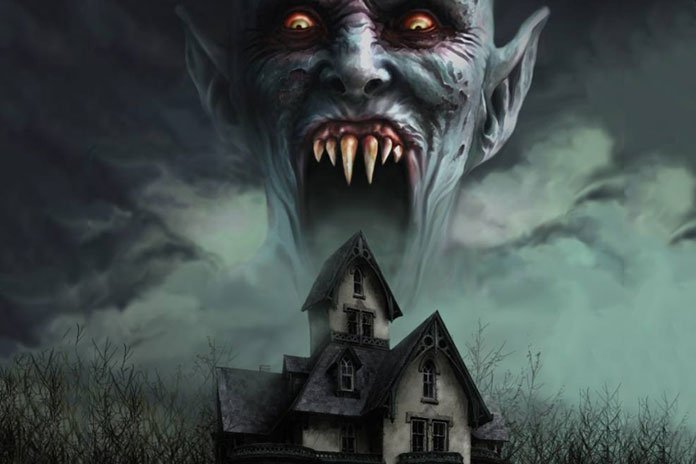
Best Gothic Horror Short Stories
If you’re looking for a particular type of horror and want something different, there are plenty of gothic horror short stories to read, many of which are free online and in stores.
What is Gothic Horror?
Gothic horror is a subgenre of horror fiction that emerged in the late 18th century. It is characterized by elements of mystery, death, decay, and the supernatural, often set in atmospheric and gloomy settings such as haunted castles, graveyards, and abandoned estates. Gothic horror stories often feature dark, brooding characters and themes of sin, guilt, and the supernatural.
The genre was popularized by writers such as Edgar Allan Poe, Mary Shelley, and Bram Stoker and has had a lasting impact on popular culture, influencing later horror genres such as vampire fiction and modern horror films.
While there are a good few longer novels like Dracula to sink your teeth in, the fun with this sub-genre is the hundreds of different gothic horror short stories.

Who are the Leading Lights?
The early leading lights in gothic horror fiction in the 18th and 19th centuries include the following authors:
- Horace Walpole – “The Castle of Otranto” (1764) is considered the first true gothic novel and set the tone for the genre.
- Ann Radcliffe – Known for her works such as “The Mysteries of Udolpho” (1794) and “The Italian” (1797), she was one of the most popular and influential writers of gothic fiction during the late 18th and early 19th centuries.
- Matthew Lewis – Author of “The Monk” (1796), a lurid tale of sin, guilt, and supernatural horror that was widely read and discussed in its day.
- Mary Shelley – Author of “Frankenstein” (1818), which is considered one of the greatest gothic novels of all time and is known for its exploration of science, death, and the supernatural.
- Edgar Allan Poe – Considered the master of the macabre, Poe wrote a series of influential short stories and poems that explored the darker side of human nature, including “The Tell-Tale Heart” (1843) and “The Raven” (1845).
- Charlotte Bronte – Author of “Jane Eyre” (1847), a novel that blended elements of gothic horror with social critique and romance.
- Bram Stoker – Author of “Dracula” (1897), one of the most famous and enduring works of gothic horror and a seminal work in the vampire genre.
These authors and their works laid the foundation for the gothic horror genre and continue to influence popular culture and horror fiction to this day. There are some modern-day gothic horror short story and novel writers you might want to add to your list:
- Stephen King – One of the most popular and influential horror writers of the 20th century, King has written numerous novels and short stories that draw on gothic themes and settings.
- Anne Rice – Author of “The Vampire Chronicles” (1976-2014), which revitalized the vampire genre and explored the darker side of the supernatural.
- Clive Barker – Known for his imaginative and often graphic depictions of the supernatural, Barker has written a number of novels and short stories that draw on gothic horror, including “The Books of Blood” (1984-1985) and “Imajica” (1991).
- Guillermo del Toro – A film director known for his gothic horror films, such as “Pan’s Labyrinth” (2006) and “Crimson Peak” (2015), del Toro draws on traditional gothic themes and motifs in his work.
- Neil Gaiman – A versatile writer who has worked in a variety of genres, including gothic horror, Gaiman is known for works such as “Coraline” (2002) and “The Graveyard Book” (2008), which explore dark and fantastical worlds.
- Angela Carter – A pioneering feminist writer who combined gothic horror with feminist themes, Carter is known for works such as “The Bloody Chamber” (1979), which retells classic fairy tales with a gothic twist.
- These writers, among others, have taken the legacy of gothic horror and pushed it in new and innovative directions, exploring the genre in fresh and exciting ways and continuing to influence popular culture and the world of horror fiction.
Best Gothic Horror Stories
- “The Tell-Tale Heart” by Edgar Allan Poe (1843): The narrator of the story becomes obsessed with the pale blue eye of an old man and murders him, only to become haunted by the old man’s heart that continues to beat.
- “The Yellow Wallpaper” by Charlotte Perkins Gilman (1892): The story follows a woman who is confined to her room by her husband as a treatment for her depression and is driven to madness by the strange yellow wallpaper in her room.
- “Carmilla” by Joseph Sheridan Le Fanu (1871): A young woman befriends a mysterious visitor named Carmilla who reveals herself to be a vampire.
- “The Picture of Dorian Gray” by Oscar Wilde (1890): The story follows a man named Dorian Gray who remains young and handsome while his portrait ages and decays, reflecting the corruption and depravity of his soul.
- “The Case of Mr. Valdemar” by Edgar Allan Poe (1845): The story follows a man who is hypnotized and dies while in a state of suspended animation, leaving his body in a state of decay.
- “The Black Cat” by Edgar Allan Poe (1843): The story follows a man who becomes increasingly violent and murders his wife, only to be haunted by the ghost of a black cat he had previously hung.
- “The Cask of Amontillado” by Edgar Allan Poe (1846): The story follows a man who lures his victim into a wine cellar and walling him up alive as a form of revenge.
- “Dracula’s Guest” by Bram Stoker (1914): A collection of short stories related to Bram Stoker’s famous novel “Dracula”, including the tale of a man who travels to Transylvania and becomes embroiled with the vampire count.
- “The Fall of the House of Usher” by Edgar Allan Poe (1839): The story follows a man who visits his childhood friend Roderick Usher, who lives in a crumbling mansion with his sickly sister Madeline. The house and the Usher family both seem to be falling apart and the narrator realizes that the end is near.
- “The Great God Pan” by Arthur Machen (1894): A young woman becomes the subject of a scientific experiment and is left with strange abilities and visions, leading to a series of strange events and a chilling discovery.
- “The Jolly Corner” by Henry James (1908): A man returns to his childhood home and becomes haunted by the ghost of the person he would have become if he had never left.
- “The Turn of the Screw” by Henry James (1898): A governess is hired to care for two children at a remote estate, only to discover that the previous governess and her lover are still haunting the grounds.
- “The Ghost of John Parkes” by Mary Downing Hahn (1981): A young boy moves into a new home and begins to experience strange and frightening occurrences, eventually realizing that a ghost is seeking his help to solve a mystery.
- “The Albatross” by Susan Hill (1971): A sailor finds a mysterious bird on board his ship and kills it, causing a series of terrible events and a haunting by the ghost of the bird.
- “The Judge’s House” by Bram Stoker (1891): A young man rents a remote house for the summer and begins to experience strange and frightening occurrences, eventually realizing that the house is haunted by the ghost of a judge.
- “The Shadow Over Innsmouth” by H.P. Lovecraft (1936): A young man travels to the seaside town of Innsmouth, only to discover that the town’s residents are hiding a dark secret related to their ancestry and worship of ancient gods.
- “The Phantom Coach” by Amelia Edwards (1864): A young woman embarks on a journey through the wilderness and encounters a ghostly coach driven by an unseen hand, leading to a series of strange and terrifying events.
- “The House of the Nightmare” by Edith Nesbit (1895): A group of travelers stay the night at a strange house and begin to experience strange and frightening dreams, eventually realizing that they are trapped in a nightmare world.
- “The Child That Went with the Fairies” by J.S. Le Fanu (1872): A young woman becomes the subject of a fairy curse, causing her to grow increasingly ill and haunted by strange and terrifying visions.
- “The Signalman” by Charles Dickens (1866): A railway signal-man begins to experience strange and frightening visions and ghostly apparitions, leading to a series of disturbing events and a tragic end.
- “The Beckoning Fair One” by Oliver Onions (1911): A young man becomes increasingly haunted by the ghost of a beautiful woman, leading him to a series of strange and terrifying events.
- “Green Tea” by J. Sheridan Le Fanu (1869): A man becomes increasingly haunted by a strange and sinister presence that seems to be following him, leading him to a series of strange and terrifying events.
- “The Picture in the House” by H.P. Lovecraft (1920): A traveler becomes lost in the countryside and seeks refuge in a remote house, only to discover that its occupant is hiding a dark and sinister secret.
- “The Open Window” by Saki (1914): A young girl tells a stranger a ghost story, leading him to a series of strange and terrifying events.
- “The Pit and the Pendulum” by Edgar Allan Poe (1842): A man is imprisoned by the Spanish Inquisition and is subjected to a series of frightening and torturous experiences, including the pit and pendulum.
- “The Body Snatcher” by Robert Louis Stevenson (1884): Two medical students become involved in a series of sinister events related to body snatching and the resurrectionists trade.
- “The Legend of Sleepy Hollow” by Washington Irving (1820): A young schoolteacher named Ichabod Crane comes to the town of Sleepy Hollow and becomes embroiled in a series of strange and frightening events, including the legend of the Headless Horseman.
What are your favourite gothic horror short stories? Let us know in the comments section below.


